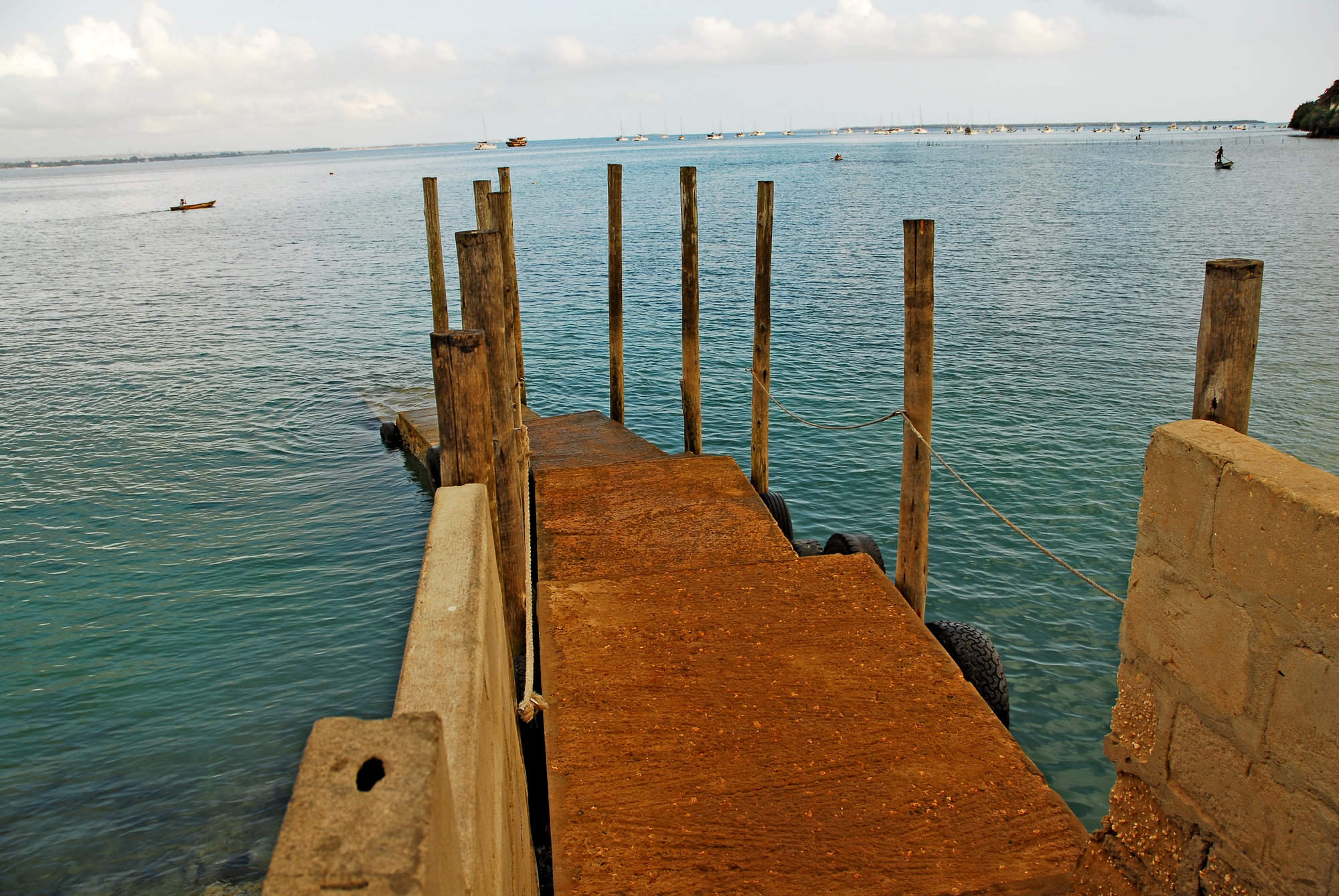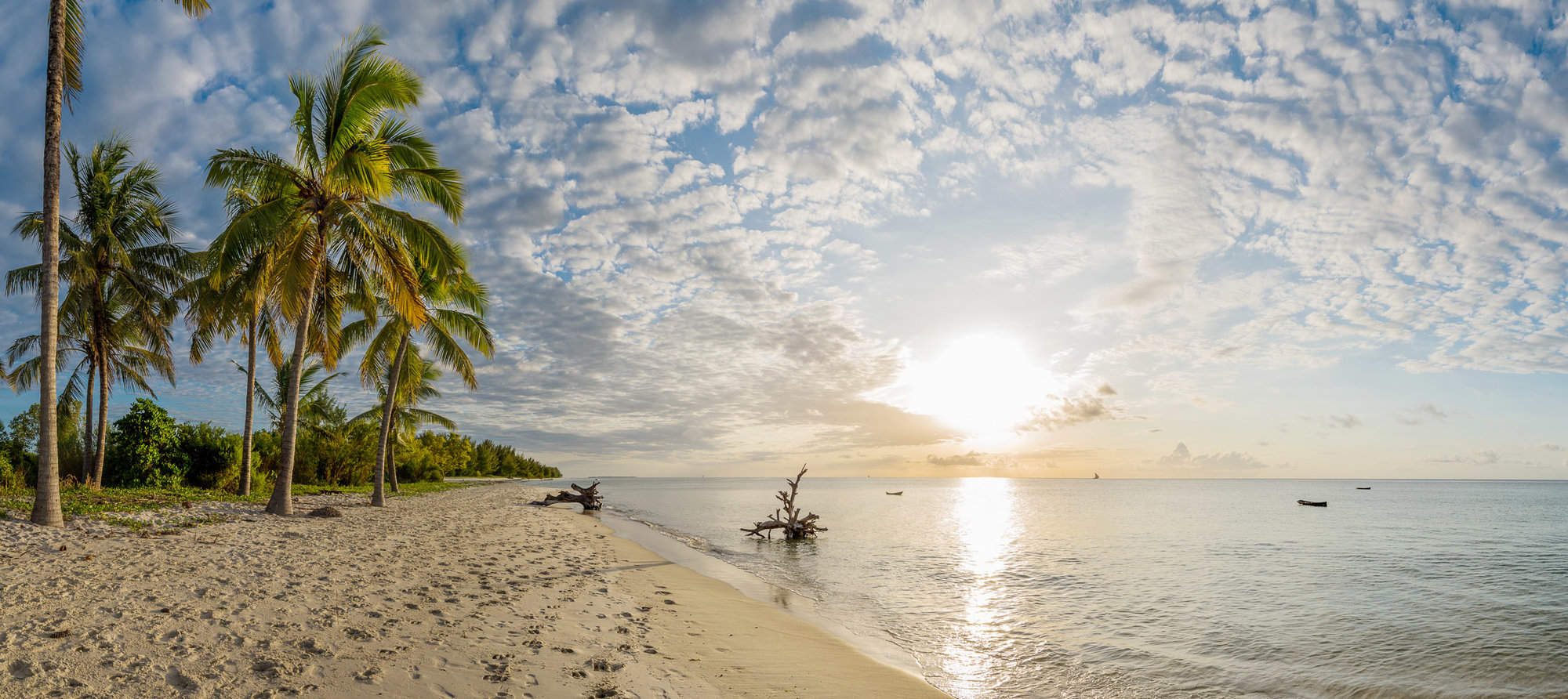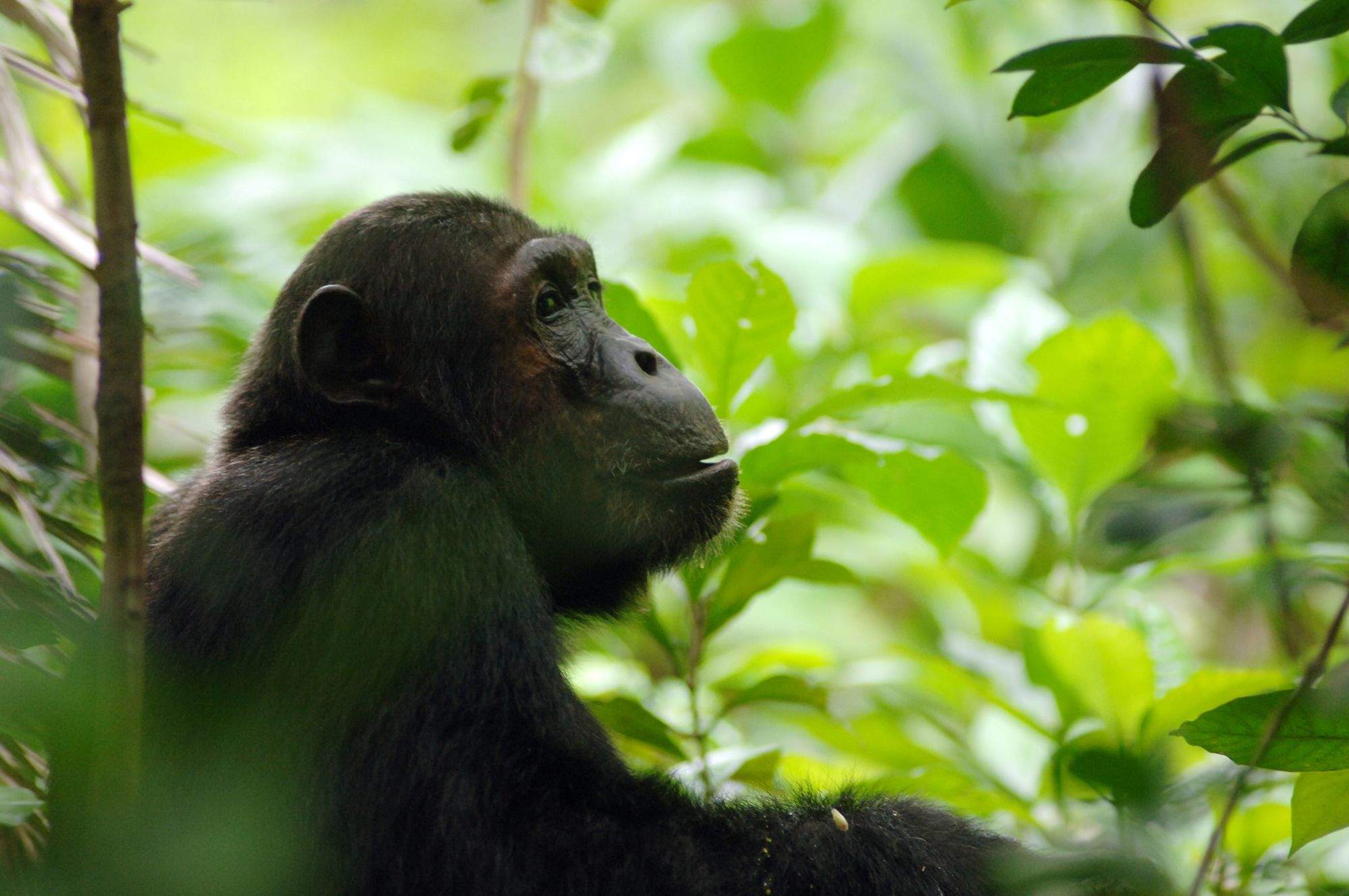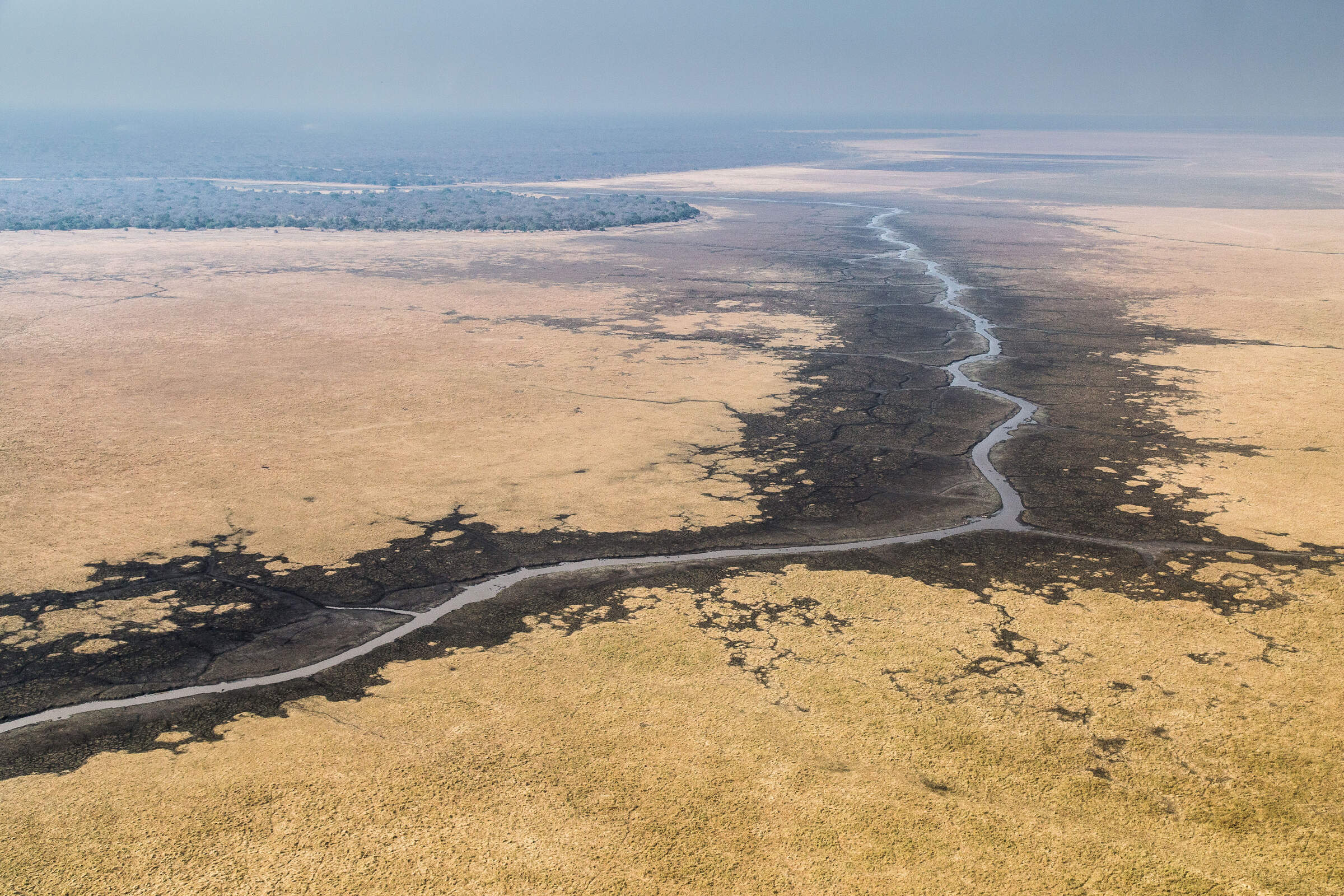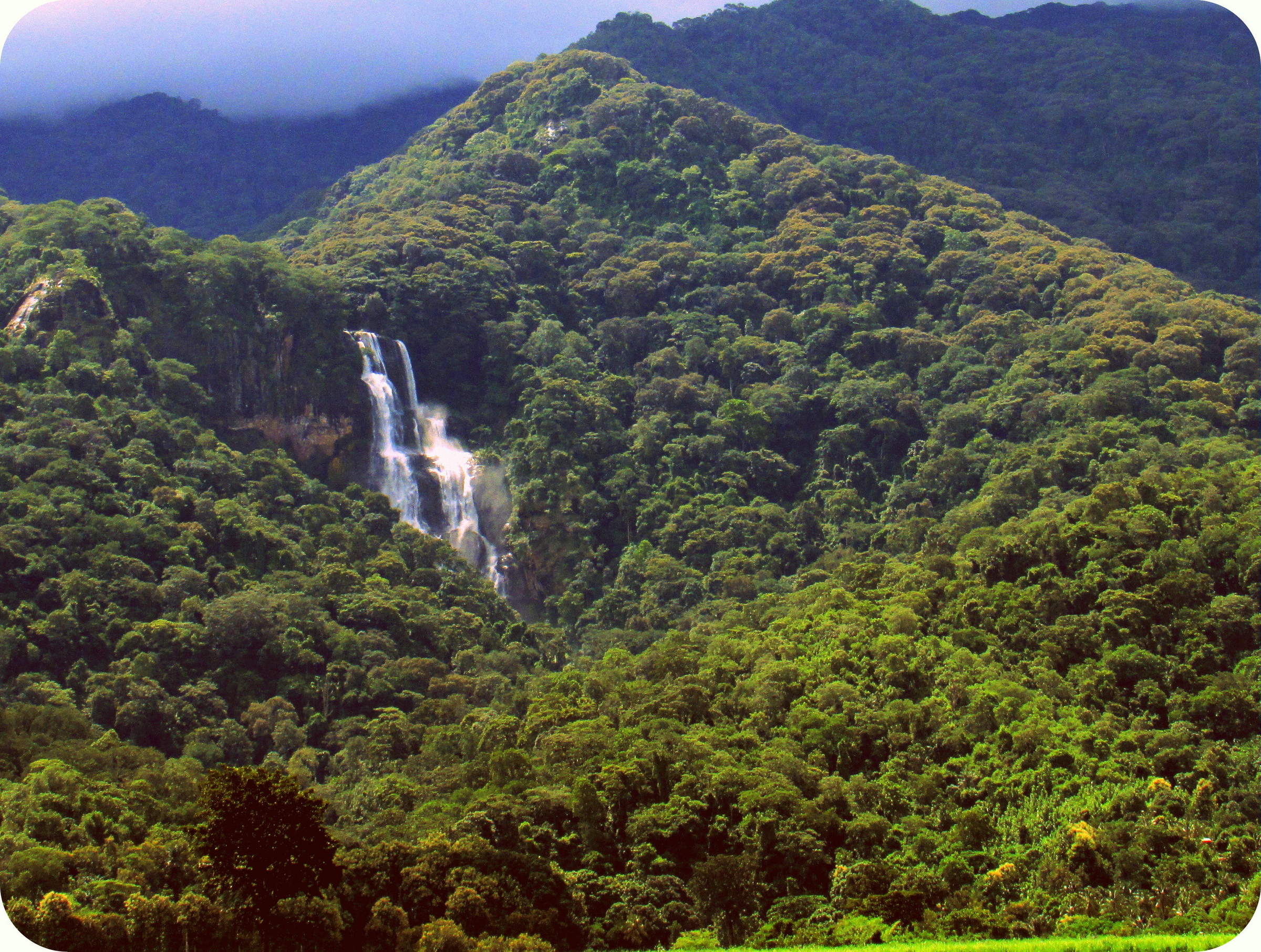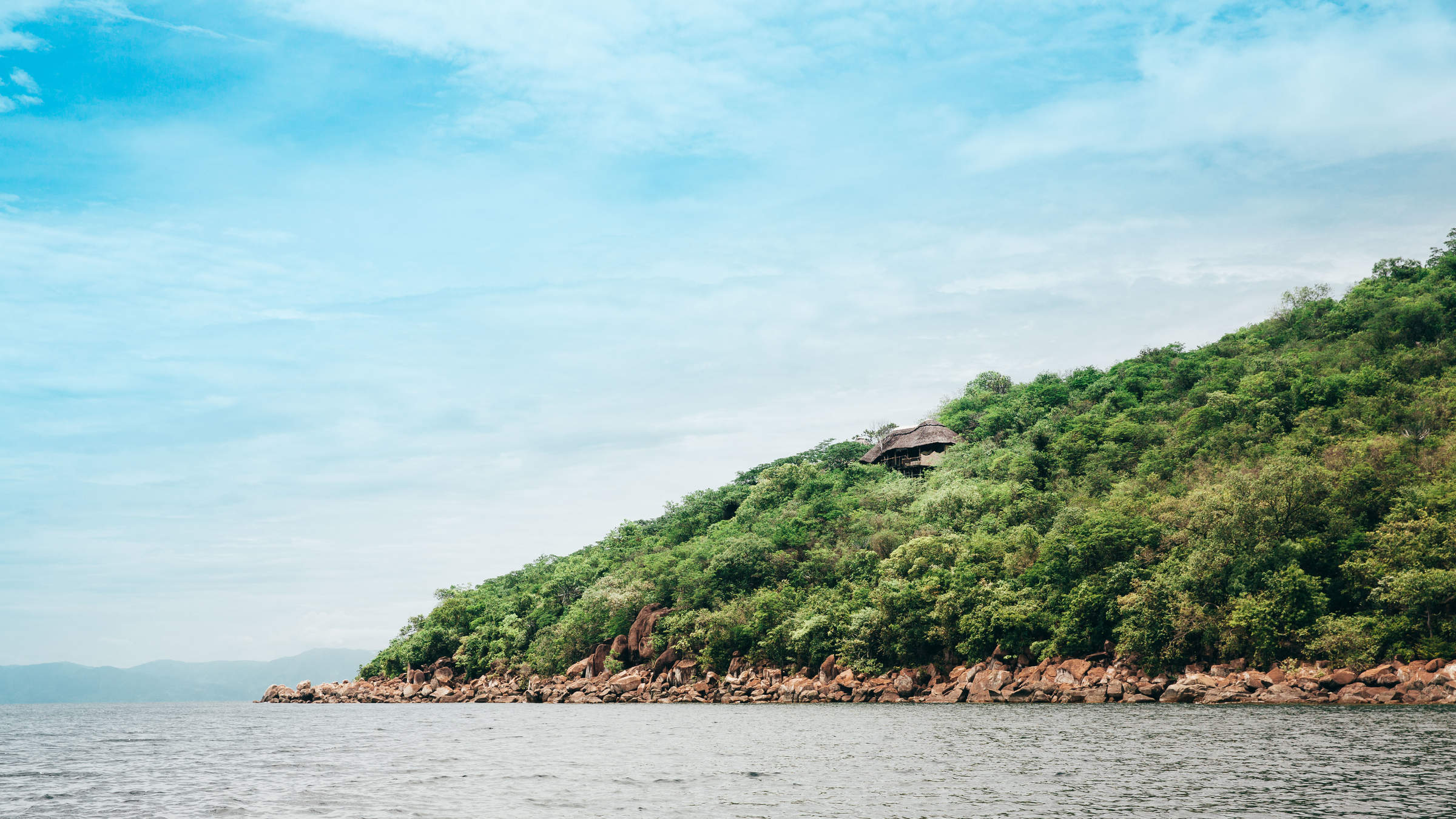
Fanjove Island
Fanjove Island
Fanjove Island teems with marine wildlife, from turtles and puffer fish to herons and bottle-nosed dolphins.
Its white sandy beaches are a nesting site for both green and hawksbill turtles, with the young hatching between April and July. Fanjove is home to many native birds, including herons, weavers and egrets; there are also a multitude of migrant species visiting its shores between November and March.
Over 10km of coral reef sit offshore which is home to a wide variety of marine life. Should you dive beneath the waves you can discover a huge number of tropical fish including sweetlips, parrot and puffer fish. If you are lucky you can even encounter pods of spinner and bottle nosed dolphins, turtles and occasionally migrating humpback whales.
A number of activities are on offer from Fanjove Private Island Lodge. Kite surfing and diving are both fantastic options for those feeling a little more adventurous, whilst those looking for a more relaxed experience can take a cruise on a traditional dhow sailing boat. You can also explore the Fanjove nature trail or simply enjoy swimming in the crystal clear waters.

Holidays visiting Fanjove Island
Just ideas, we'll always tailor-make a trip for you

Caraway Beach Holiday
5 days • 1 locations
DAR ES SALAAM AIRPORT TO DAR ES SALAAM AIRPORT
The epitome of a peaceful beach retreat, the Caraway Beach Holiday offers relaxation on flawless beaches and the opportunity to explore beautiful waters. Stay in the island’s only lodge and enjoy complete exclusivity.
US$5,680 - US$5,680 per person
Most recent reviews of our beach holidays to Fanjove Island
Click below to browse all 8 reviews from Fanjove Island. All from our travellers; all are in full & unedited.
Arrived 14 Sep 2024, 15 nights
"My Sep 2024 trip"
Overall rating: Excellent
Arrived 30 Aug 2024, 17 nights
"Our September 2024 honeymoon"
Overall rating: Excellent
Arrived 7 Jan 2021, 13 nights
"My Jan 2021 trip"
Overall rating: Excellent
Arrived 10 Oct 2018, 15 nights
"Tanzania"
Overall rating: Excellent
Arrived 8 Oct 2018, 3 nights
"Wonderful holiday in Tanzania"
Overall rating: Excellent
Arrived 31 Jan 2018, 20 nights
"My Jan 2018 trip"
Overall rating: Excellent
Arrived 22 Dec 2017, 13 nights
"Chrismas and New Year in Tanzania 2017-18"
Overall rating: Excellent
Arrived 1 Nov 2014, 4 nights
"My Nov 2014 trip"
Overall rating: Excellent
Where to stay in Fanjove Island
Our suggestions for beach lodges in Fanjove Island

Fanjove Lodge
Fanjove Private Island Lodge is a relatively new place to stay, and the very first on this previously unexplored private island.
When to go to Fanjove Island
Our month by month guide: What it's like to visit Fanjove Island in Tanzania
Fanjove Island experiences distinct seasonal variations. The long dry season from June to October offers clear skies, warm temperatures, and excellent conditions for beach activities, snorkelling, and diving. The short rains in November and December bring intermittent showers but still allow for enjoyable visits.
The short dry season in January and February offers a mix of clear and occasionally rainy days, then the long rains come from March to May, with April being the wettest month, and see lush vegetation and dramatic storm skies. However, accommodation on the island is closed from mid-March to the end of May.
Jan
Feb
Mar
Apr
May
Jun
Jul
Aug
Sep
Oct
Nov
Dec
Fanjove Island in January
Fanjove Island experiences its short dry season in January, offering clear blue skies and sunshine. The coral reefs surrounding the island are teeming with marine life, making it an excellent time for snorkelling and diving. Birdwatchers will enjoy the presence of both resident and migrant species, with approximately 40 different bird species on the island. The Fanjove Nature Trail offers pleasant walks to explore the island's unique flora and fauna, including coconut crabs.
Overall the weather is generally favourable, and January presents a great value time to visit Fanjove Island.
- Variable weather: clear, dry, or rainy
- Occasional thunderstorms may occur
- Excellent birdwatching with migrant species
- Coral reefs teeming with marine life
Our view
A good time to visit, with pros & cons
Weather in January
Fanjove Island in February
February on Fanjove Island is characterised by warm temperatures, reaching around 33°C/91°F. The coral reefs are at their most vibrant, offering excellent visibility for scuba diving and snorkelling enthusiasts. The white sandy beaches provide perfect spots for sunbathing and beach activities, while the 19th-century German lighthouse offers panoramic views of the island and surrounding waters.
This month marks the beginning of the turtle nesting season, with green and hawksbill turtles starting to arrive on the beaches. Birdlife is particularly rewarding as northern hemisphere migrants join the resident species. February is an ideal time to enjoy the island's natural beauty with lower accommodation rates.
- Hot and dry weather
- Perfect for beach relaxation and activities
- Nesting season begins for sea turtles
- Excellent conditions for snorkelling and diving
- Ideal time for sunset dhow cruises
Our view
A very good time to visit
Weather in February
Fanjove Island in March
March on Fanjove Island sees the onset of the long rainy season, although exact timing varies yearly. The increased rainfall nourishes the island's vegetation, creating lush landscapes along the Fanjove Nature Trail. Despite the rain, the coral reefs remain accessible for diving and snorkelling, with diverse marine life still visible. The island's unique cliff system provides dramatic views, especially during stormy weather.
Turtle nesting activity continues, and visitors may witness turtles coming ashore to lay eggs. Birdwatching remains excellent, with both resident and migratory species present. The Fanjove Private Island Lodge usually closes in the middle of the month. While some water activities may be limited, March provides a unique perspective of the island's ecosystem adapting to the changing seasons.
- Hot with building humidity before rains
- Great for birdwatching with migrant species
- Calm waters ideal for kayaking and paddling
Our view
A good time to visit, with pros & cons
Weather in March
Fanjove Island in April
April is the wettest month on Fanjove Island, with an average rainfall of 250mm, and accommodation on the island is closed. The increased precipitation creates a lush, green environment, and this month also marks the peak of the turtle nesting season.
- Island accommodation closed
- Heavy rain expected with thunderstorms
- Turtle hatchings begin
- Lush and vibrant landscapes
Our view
A time to avoid if possible
Weather in April
Fanjove Island in May
May on Fanjove Island sees a gradual transition from the wet to the dry season, though accommodation remains closed. The island's vegetation is lush and vibrant following the rains, and turtle hatching season continues, with baby turtles emerging from their nests on the white sandy beaches.
- Island accommodation remains closed
- Heavy rains continue, dramatic storm skies
- Green vegetation creates picturesque scenes
- Turtle hatchings continue
Our view
A time to avoid if possible
Weather in May
Fanjove Island in June
June marks the beginning of the dry season on Fanjove Island, with clearer skies and reduced rainfall. The coral reefs offer excellent visibility for snorkelling and diving, showcasing the vibrant marine life. Turtle hatching season is in full swing, providing opportunities to witness baby turtles making their way to the sea. The white sandy beaches are perfect for sunbathing and leisurely walks, and the 19th-century lighthouse provides panoramic views of the island and surrounding waters.
Birdwatching remains rewarding, with many species easily observable. Traditional dhow cruises become more frequent, offering scenic sunset experiences. The Fanjove Nature Trail is ideal for exploring the island's unique ecosystem. June's pleasant weather and low season prices make it an attractive time to visit.
- Variable weather: clear, dry, or some rain
- Excellent conditions for water activities
- Low season with good value pricing
Our view
A good time to visit, with pros & cons
Weather in June
Fanjove Island in July
July on Fanjove Island is characterised by clear skies and comfortable temperatures, marking the peak of the dry season. The coral reefs surrounding the island offer exceptional visibility for snorkelling and diving, with diverse marine life on display. Turtle hatching season continues, providing memorable experiences for visitors. Birdwatching opportunities abound, with many species easily observable around the island.
The white sandy beaches are at their most inviting, perfect for relaxation and beach activities, and the calm waters are ideal for kayaking and paddleboarding along the scenic coastline. Traditional dhow cruises offer picturesque sunset views. The Fanjove Private Island Lodge experiences higher occupancy during this popular month, so advance booking is recommended.
July provides excellent conditions for enjoying all of Fanjove Island's attractions.
- Dry and warm days, cool mornings/evenings
- Peak time for marine life observation
- Popular period with higher visitor numbers
- Perfect for beach picnics and dinners
- Excellent visibility for diving and snorkelling
Our view
Fantastic: the very best time to visit
Weather in July
Fanjove Island in August
August continues the dry season on Fanjove Island, offering clear skies and pleasant temperatures. The coral reefs provide excellent conditions for snorkelling and diving, with high visibility and abundant marine life. While turtle hatching season is winding down, there's still a chance to witness late hatchlings. The white sandy beaches are perfect for sunbathing and beach activities, and the calm seas are ideal for kayaking and paddleboarding around the island.
Birdwatching remains rewarding, with many resident species easily observable. Traditional dhow cruises are popular, especially for sunset experiences. The Fanjove Nature Trail showcases the island's unique flora and fauna. August is a peak month for visitors, so early reservations are recommended.
- Dry and warm, cool early mornings/evenings
- Fantastic marine life viewing opportunities
- Busy period, book activities in advance
- Great conditions for fishing excursions
- Ideal time to explore the island's cliff system
Our view
Fantastic: the very best time to visit
Weather in August
Fanjove Island in September
September on Fanjove Island marks the end of the peak season, while still offering excellent weather conditions. The coral reefs continue to provide superb visibility for snorkelling and diving, showcasing the island's rich marine biodiversity. While turtle hatching season has concluded, the white sandy beaches remain perfect for relaxation and sunbathing, and the calm waters around the island are ideal for kayaking and paddleboarding.
Birdwatching is rewarding, with resident species easily observable and early migratory birds beginning to arrive. Traditional dhow cruises offer scenic sunset experiences, and the Fanjove Nature Trail provides opportunities to explore the island's unique ecosystem.
September combines great weather with slightly lower visitor numbers compared to July and August, offering a balance of ideal conditions and tranquillity.
- Excellent conditions for all activities
- Slightly quieter than peak months
- Landscapes dry with less vegetation
- Cooler mornings/evenings, warm days
- Prime time for deep-sea fishing
Our view
Fantastic: the very best time to visit
Weather in September
Fanjove Island in October
October on Fanjove Island sees the continuation of dry, pleasant weather. The coral reefs offer excellent visibility for snorkelling and diving, with diverse marine life on display. The white sandy beaches provide perfect spots for relaxation and sunbathing. The calm waters around Fanjove are ideal for kayaking and paddleboarding, allowing exploration of the scenic coastline, and traditional dhow cruises continue to offer beautiful sunset experiences.
Birdwatching becomes increasingly interesting as more migratory species arrive on the island. The Fanjove Nature Trail showcases the island's unique flora and fauna, adapted to the dry conditions. October offers a great combination of favourable weather and diverse activities, with mid-season prices applicable.
- Mostly dry with comfortable temperatures
- Great for water sports and beach activities
- Lower visitor numbers than earlier months
- Ideal for exploring the Fanjove Nature Trail
- Perfect conditions for romantic getaways
Our view
A very good time to visit
Weather in October
Fanjove Island in November
November on Fanjove Island marks the beginning of the short rainy season, with intermittent showers possible. The coral reefs remain accessible for snorkelling and diving, offering glimpses of the diverse marine life. Traditional dhow cruises continue to operate, offering unique perspectives of the island during changing weather.
Birdwatching becomes excellent as more migratory species arrive, joining the resident birds. The Fanjove Nature Trail showcases the island's flora coming to life with the first rains. While some outdoor activities may be affected by rain, November offers a unique opportunity to experience Fanjove Island's ecosystem transitioning to the wet season, with fewer tourists and potential for great value.
- Variable weather: clear, dry, or some rain
- Migratory birds begin to arrive
- Good wildlife sightings as rains approach
- Quieter period with lower prices
- Excellent time for kayaking adventures
Our view
A good time to visit, with pros & cons
Weather in November
Fanjove Island in December
December on Fanjove Island experiences a mix of sunny days and short rain showers. The coral reefs continue to offer good visibility for snorkelling and diving, showcasing the diverse marine life. The white sandy beaches provide perfect spots for relaxation during dry periods. Traditional dhow cruises offer scenic experiences, especially during breaks in the weather. Birdwatching is excellent, with a mix of resident and migratory species present.
December presents a unique blend of Fanjove's attractions, with the added allure of lush landscapes and lower rates outside of the Christmas and new year period.
- Variable weather with occasional rain
- Good for general wildlife viewing
- Quiet early month, busy towards year-end
Our view
A good time to visit, with pros & cons
Weather in December
Map of Fanjove Island
Choices for where to stay in Fanjove Island
Fanjove Island: Beach holidays

Caraway Beach Holiday
5 days • 1 locations
DAR ES SALAAM AIRPORT TO DAR ES SALAAM AIRPORT
The epitome of a peaceful beach retreat, the Caraway Beach Holiday offers relaxation on flawless beaches and the opportunity to explore beautiful waters. Stay in the island’s only lodge and enjoy complete exclusivity.
US$5,680 - US$5,680 per person
Best beach lodge to stay on Fanjove Island
Listed below is our recommendation for a nice place to stay on Fanjove Island.

Fanjove Lodge
Fanjove Private Island Lodge is a relatively new place to stay, and the very first on this previously unexplored private island.

Looking for inspiration on where to travel next?
Visit our trip chooser to explore your options and find inspiration for your perfect African adventure
Inspire me


